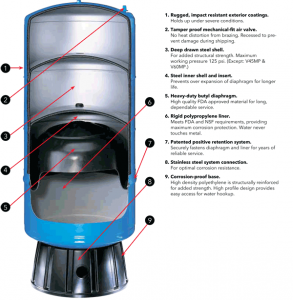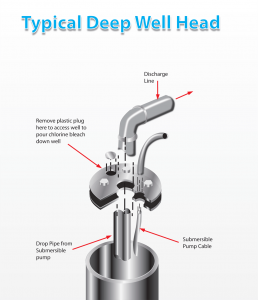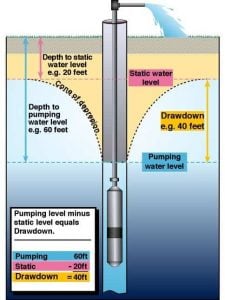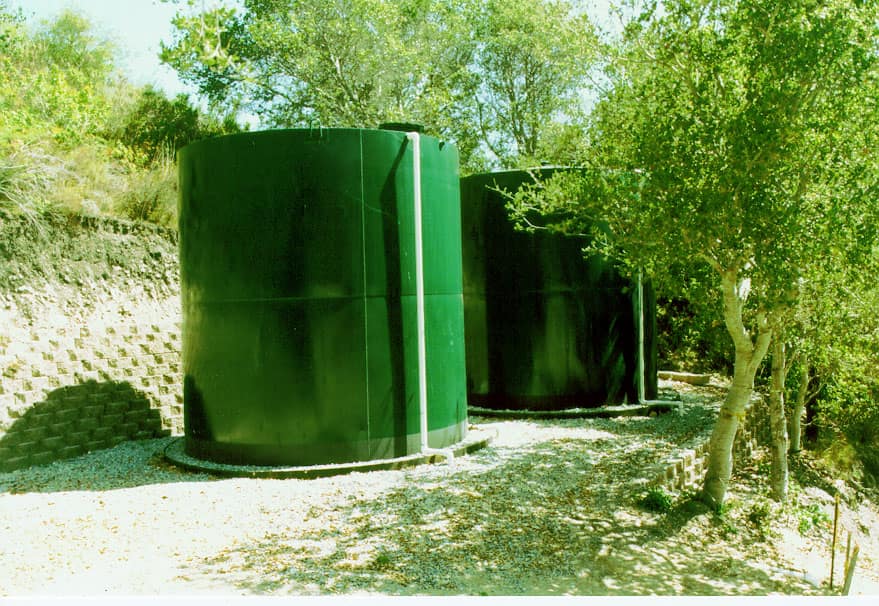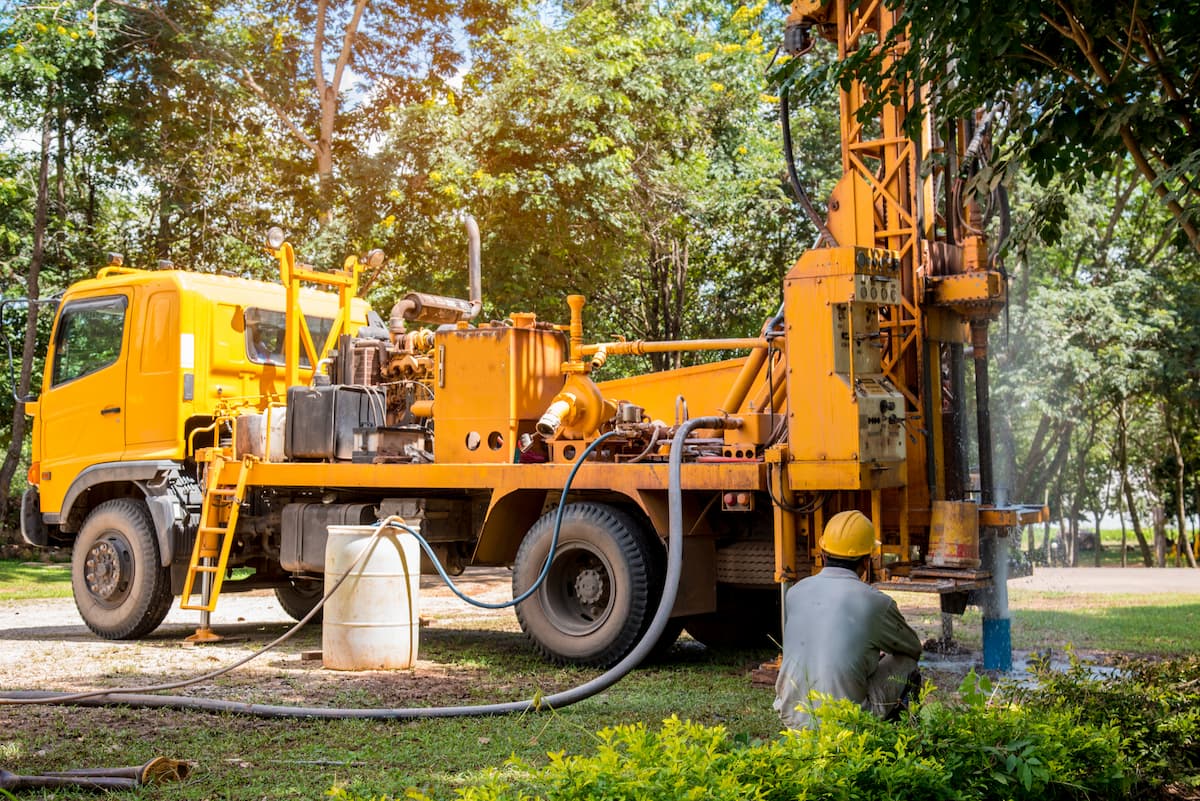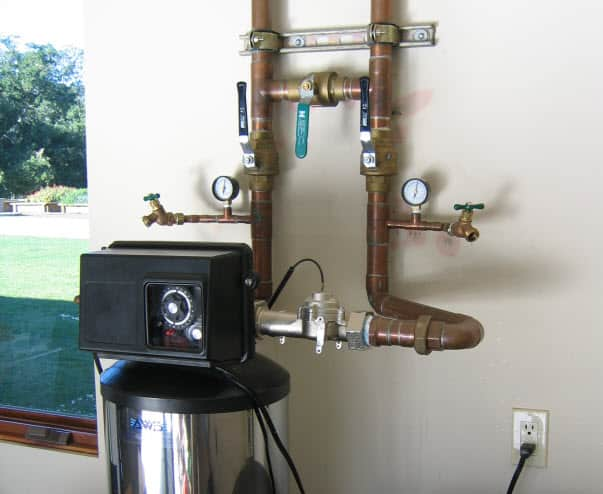Treating Well Water
Understanding How Wells and Groundwater Systems Work for Well Water Treatment

Treating well water? It's kind of amazing to think about it. According to the National Groundwater Association, 47 percent of the U.S. population depends on groundwater for its drinking water supply. Of that 47 percent, many get their water from a private well.
If you have a private well, are new to well water, or are interested in learning about treating well water, you might also want to know how groundwater and water wells work.
What is Groundwater?
Groundwater is water that soaks into the soil from rain or other precipitation and moves downward to fill cracks and other openings in beds of rocks and sand. It's a renewable resource, although renewal rates vary greatly according to environmental conditions. Here in California, we recently experienced a serious drought, but thankfully, we had ample rains this past winter.
It is also an abundant natural resource. Of all the fresh water in the world (excluding polar ice caps), 95 percent is groundwater. Surface water (lakes and rivers) only makes up three percent of our fresh water.
Scientists estimate U.S. groundwater reserves to be at least 33,000 trillion gallons, equal to the amount discharged into the Gulf of Mexico by the Mississippi River in the past 200 years.
Groundwater is naturally filtered by the earth that holds it. It can, however, be contaminated by pollutants that come into contact with the earth's surface. Care should be taken at the household, local, national, and global levels to protect groundwater from pollution.
The Making of Groundwater Flow
Water from rain and snow follows three main paths:
- Some water evaporates from the earth’s surface into the air or is breathed out by vegetation and returns to the earth’s atmosphere. Some water runs off into streams, lakes, or oceans.
- Some filter into the ground. There, it can flow to the surface as springs, move into surface water, or recharge groundwater deeper in the earth.
- Groundwater can move into large underground natural storage areas known as aquifers and/or artesian wells.
These processes are part of the hydrologic cycle, which describes the continuous movement of water on, above, and below the Earth's surface.
As groundwater moves through the ground, it dissolves some of the minerals it comes in contact with, such as limestone and iron. Those dissolved minerals give groundwater its chemical character or quality.
Much bottled water comes from groundwater reserves.
Groundwater Flow and Quality
Groundwater flow and quality are fundamental aspects of understanding groundwater systems. Groundwater flow refers to the movement of water through the saturated zone beneath the earth’s surface. This movement is primarily driven by gravity and hydraulic gradients, which are the differences in water pressure within the aquifer. The rate at which groundwater flows can vary significantly depending on factors such as the permeability of the underlying geology, the hydraulic gradient, and the volume of water being extracted.
Groundwater quality, on the other hand, is influenced by various factors, including the geological composition of the aquifer, the types of rocks and soil it passes through, and human activities such as agriculture, urbanization, and industrial processes. Contaminants like nitrates, pesticides, and heavy metals can infiltrate the aquifer through surface water, soil, and rock, posing risks to groundwater quality.
Confined aquifers, which are trapped between layers of impermeable rock or clay, are generally less susceptible to contamination from surface activities. However, they can still be affected by pollutants that seep through cracks or are introduced through improper well construction. Unconfined aquifers, which are directly recharged by surface water, are more vulnerable to contamination from agricultural runoff, septic tanks, and other surface activities.
Regular testing and monitoring of groundwater quality are essential to ensure the safety and sustainability of groundwater resources. By understanding the dynamics of groundwater flow and the factors that affect its quality, well owners can take proactive measures to protect their water supply.
Groundwater and Private Drinking Water Supply Wells
Private water wells tapping groundwater resources can frequently provide the highest quality water available to homeowners and businesses. Deep-drilled wells recharge themselves and can provide a constant, steady supply of water that is not easily impacted by dry weather conditions.
The proper management of groundwater basins is crucial to ensure a sustainable and high-quality water supply for private wells.
According to an independent market survey sponsored by the National Ground Water Association (NGWA), 78 percent of private water well owners prefer receiving their drinking water from their wells. Eighty-eight percent of those surveyed said private wells were their least expensive drinking water option.
Private water wells also allow homeowners to control their water quality more. They can store the water and have it available for emergencies.
 What exactly is a drilled well?
What exactly is a drilled well?
A drilled well consists of a hole bored into the ground, with the upper part being lined with casing. The casing prevents the collapse of the borehole walls and (with a drive shoe or grout seal) prevents surface or subsurface contaminants from entering the water supply.
The casing also houses the submersible well pump and the pipe that moves water from the pump to the surface.
The water table is the boundary between the saturated and unsaturated zones in the ground, indicating where the soil and rock are fully saturated with water.
The lower portion of the borehole below the casing is the intake through which water enters the well. Depending on the geologic conditions, the intake may be an open hole in solid bedrock or screened and gravel-packed.
Once the well is completed, it is pumped to develop the well and determine the yield.
Many areas need further work after drilling to remove fine material remaining from the drilling process so that water can more readily enter the well.
The quantity of water (yield test) is usually measured during development. The minimum test time is one hour.< /span
An important step is disinfecting the water to kill any bacteria present or that may have been introduced when the well was drilled or worked on.
After proper disinfection, the well is capped to provide sanitary protection until it is hooked into the customer’s system. Well, caps require an air vent.
Most wells use submersible pumps, which are down in the water and pump out to the home. Your pressure switch turns the well pump on and off automatically, maintaining a good range of pressure in your home.
If you see your well pump on top of the ground, then that is what is called a jet pump. It is sucking water up out of a relatively shallow well (usually 30 ft or less in depth). These types of shallow wells are much more prone to contamination.
Most states and provinces do not regulate or have jurisdiction over private wells serving a single home or farm. Thus, the responsibility for protecting private wells is squarely on the well owner.
Basic Types of Wells
There are several types of wells, each with unique characteristics and advantages, catering to different water supply needs. The most common types of wells include:
- Dug Wells: These wells are excavated by hand using shovels and are often lined with stones, brick, or concrete to prevent collapse. They are typically shallow, reaching depths of about 10 to 30 feet. Due to their shallow nature, dug wells are suitable for small-scale water supply needs, such as for individual households or small farms. However, due to their shallow nature, dug wells are more susceptible to contamination from surface water and nearby activities.
- Driven Wells: Constructed by driving a small-diameter pipe into soft earth, such as sand or gravel, driven wells are relatively easy and quick to install. These wells are usually shallow, with depths ranging from 30 to 50 feet, and are commonly used for irrigation and other non-potable water needs. While driven wells can provide a reliable water supply, they are also more prone to contamination due to their shallow depth.
- Drilled Wells: The most common type of well, drilled wells, can reach depths of over 1,000 feet. These wells are created using drilling rigs that bore deep into the earth, allowing access to water from deeper aquifers. Drilled wells are used for large-scale water supply, including municipal, industrial, and residential purposes. Due to their depth, drilled wells are less likely to be contaminated by surface activities, making them a reliable source of drinking water.
- Artesian Wells: Artesian wells tap into confined aquifers where groundwater is under pressure. When drilled, the pressure allows water to flow to the surface naturally without the need for pumping. Artesian wells are often used for drinking water supply and are considered a dependable source of water. The natural pressure in artesian wells can provide a consistent and clean water supply, making them highly valued in areas with suitable geological conditions.
Understanding the different types and characteristics of wells can help homeowners and businesses choose the most appropriate well for their water supply needs. Each type of well has its advantages and potential drawbacks, so it’s important to consider factors such as depth, susceptibility to contamination, and intended use when selecting a well type.
Potential Sources of Private Well Contamination
Before you can treat well water, you might want to have your water tested and look for signs of contamination by testing the water.
If you live in a rural area with your own well, the well often has a number of potential sources of groundwater contamination near the wellhead:
- Septic system
- Improper waste disposal – paints, lubricants, dead animals, cleaning products, etc.
- Pesticide and fertilizer storage, mixing, and loading
- Livestock pens, corrals, manure stockpiles, and lagoons
- Leaky silos or underground silage pits
- Lawn and garden chemicals
- Abandoned or poorly sealed wells
- Old waste dumps
- Underground storage tanks
- Equipment and vehicle cleanup and maintenance
- Fuel storage, old underground fuel tank
- Hydro-fracking involves injecting steam and chemicals into the ground to extract petroleum from oil shale formations. Fracking operations can contaminate some local wells, although typically, they occur at far deeper depths than the groundwater layer and have little overall effect (as far as we know at this time).
Older wells in shallow aquifers are more likely to be contaminated. The soil and geologic material that overlies the aquifer greatly influences the relationship between surface activities and groundwater quality.
Deeper wells often pass through more restrictive or impermeable layers that decrease the rate at which surface water reaches the aquifer.
You should talk to the driller who installed their well about the hydrogeology of their site and ask for a copy of the well log (a record of well construction and geologic formations encountered).
While all wells need protection, it is especially important to observe good management in the vicinity of a shallow or vulnerable well.
What Can You Do To Prevent or Correct Contamination?
State regulations encourage good well location by requiring a minimum separation distance of 100 horizontal feet between newly constructed wells and any source of contamination
The required setback for septic tanks and sewer lines is 50 feet. Some counties have greater setback requirements.
Contamination related to an inadequate well cap or missing grout seal would most likely result in the presence of coliform bacteria in your well water.
Thus, the first step in the proper management of an existing private well is an annual test for total coliform bacteria.
This test can be arranged through a local certified laboratory, and home test kits are available.
If your well tests positive for coliform bacteria, a sanitary well cap may help solve the problem, especially if your well contains small numbers of bacteria.
You may also want to have your well sanitized with chlorine or do it yourself.
Be sure to disinfect your well with a 100 ppm bleach solution (1 cup household bleach in 31.2 gallons of water) any time the system is opened for maintenance or repair. Depending on the depth, different chlorine and chlorine pellets or powder levels can be used. When shocking a well with chlorine, a high-level chlorine test kit is recommended to avoid adding too much (hard on pumps and other well parts) or too little.
Also read:
7 Signs Your Water Well is in Trouble
Additional Resources on Well Water Treatment:
- California State Water Resources Control Board – Residential Water Treatment Devices: This page discusses various water treatment devices and their effectiveness in treating different contaminants in well water. California State Water Resources Control Board
- Rhode Island Department of Health – Filtration and Treatment of Private Well Water: Here, you can find information on how to choose a water treatment system for your private well, including contact information for further assistance. RI Department of Health – Well Water Treatment
- State Hygienic Laboratory – Well Water Quality and Home Treatment Systems: This PDF document offers insights into well-water home treatment systems, including traditional methods and modern technologies. Well Water Quality and Home Treatment Systems
Frequently Asked Questions (FAQs)
1. What is groundwater, and how does it form?
Groundwater forms when rain and snow seep into the soil, moving down to fill cracks in rock and sand layers. It's a major source of fresh water in the U.S.
2. How does a private water well work?
Private wells tap into groundwater sources. Most use a submersible pump and casing to draw and protect the water, providing a constant supply to the home.
3. What can contaminate a private well?
Contamination can come from nearby septic systems, agricultural runoff, fuel storage, or improper waste disposal near the wellhead.
4. What is the difference between jet and submersible pumps?
Jet pumps sit above ground and are used for shallow wells. Submersible pumps, installed in deeper wells, push water to the surface.
5. How can I protect the water quality of my well?
Test your water annually for bacteria, install a sanitary well cap, maintain proper setbacks from contaminants, and disinfect your well after any system work.

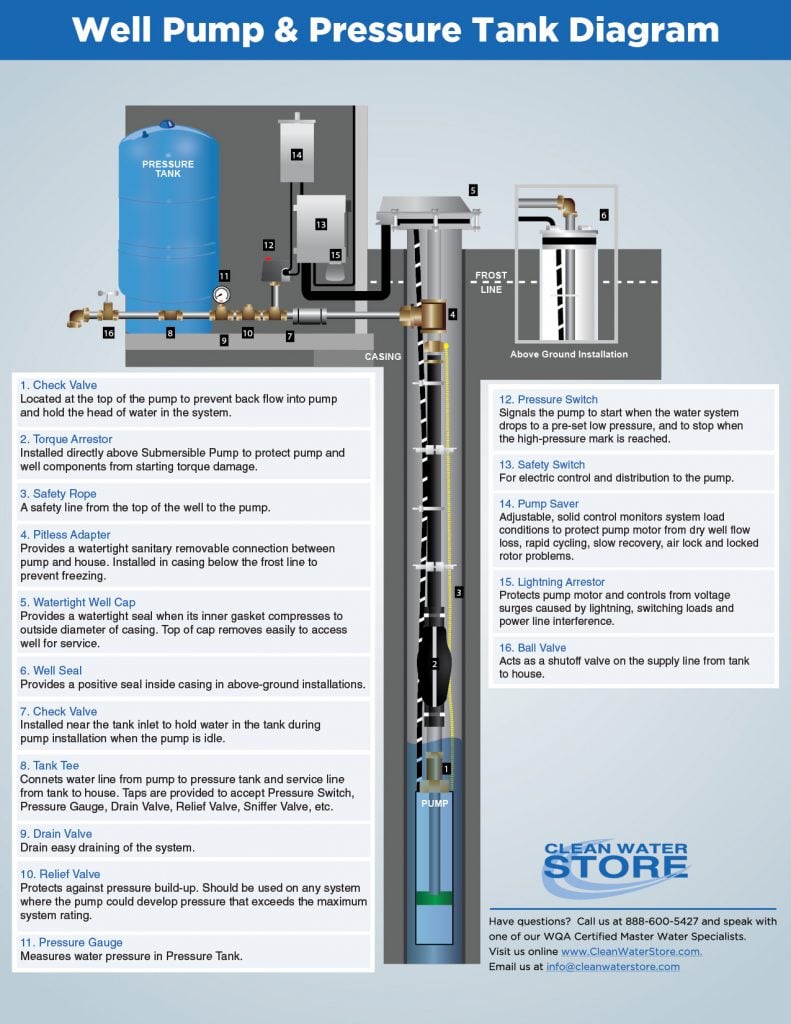 What exactly is a drilled well?
What exactly is a drilled well?